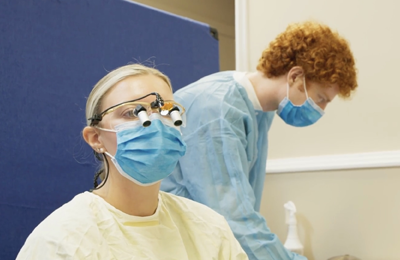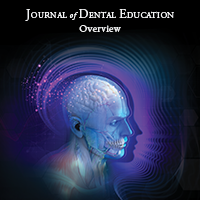On the Horizon: Upcoming Summer Events and Opportunities

Bulletin of Dental Education
July 2025, Volume 58, Issue 7
-
... See MoreMEMBER FOCUS: East Carolina University School of Dental Medicine Addresses Dental Care Gap Through Partnerships, Rural Post Office Building
July 8, 2025
Since April 2022, almost 200 patients have received care at the East Carolina University School of Dental Medicine’s (ECU SoDM) Hyde County Outreach Clinic. “We want the people of Hyde County and nearby areas to know we are there to help if they need us and to trust us to provide them with quality care,” said D. Gregory Chadwick, D.D.S., M.S., Dean of ECU SoDM.
-
... See MoreUConn SDM Partners With Hospital to Provide Dental Care to Special Needs Patients
July 8, 2025
The partnership between the University of Connecticut School of Dental Medicine (UConn SDM) and the Hospital for Special Care epitomizes the benefits of a fruitful community partnership—UConn SDM dental residents get exposure to caring for patients with special health care needs, while hospital patients get access to high-quality dental care. -
... See MoreCelebrating a Milestone in Excellence: Coastal Alabama Community College Dental Assisting Program Renovation Advances Student Learning
July 8, 2025
The dental assisting laboratory redesign was guided by a shared commitment to ensure that the program reflects the evolving needs of contemporary dental practice and provides students with a learning environment that mirrors real-world clinical settings. Leadership across the college worked together to make this strategic renovation a reality and meet institutional goals.
5 Questions With ...
-
Dr. Melanie Simmer-BeckProfessor and Interim Associate Dean, University of Missouri - Kansas City School of Dentistry | July 2025
ADEA News & Events
Member News
Dr. Margaret Hill, First Woman to Lead the University of Louisville School of Dentistry, Is Appointed Permanently
In Memory of Dr. George Blue Spruce, Jr., Advocate for American Indian and Alaska Native Students
UConn SDM Dean Steven Lepowsky and Faculty Recognized at Connecticut State Dental Society Annual Meeting
Texas A&M University College of Dentistry Inducts Three Into Hall of Fame
Texas A&M Dentistry Professor Earns Double Honors
Floyd County Physicians Fund Simulation Lab for UPIKE CDM
NYU Dentistry: School Dental Treatments Stop Kids’ Tooth Decay in Its Tracks
The Emerging Role of Dentists in Managing Sleep Disorders
Pioneering Dental Education: Innovation at University of Saskatchewan
Oregon Health & Science University SOD’s Dr. Carmem Pfeifer Awarded Prestigious ELAM Program
East Carolina University School of Dental Medicine Receives Grant to Support Dental Care in Western North Carolina
Dental Hygiene Programs Included in Free SUNY Tuition Program
Archive
- Bulletin of Dental Education | December 2024, Volume 57, Issue 12
- Bulletin of Dental Education | November 2024, Volume 57, Issue 11
- Bulletin of Dental Education | October 2024, Volume 57, Issue 10
- Bulletin of Dental Education | September 2024, Volume 57, Issue 9
- Bulletin of Dental Education | January 2025, Volume 58, Issue 1
- Bulletin of Dental Education | February 2025, Volume 58, Issue 2
- Bulletin of Dental Education | March 2025, Volume 58, Issue 3
- Bulletin of Dental Education | April 2025, Volume 58, Issue 4
- Bulletin of Dental Education | May 2025, Volume 58, Issue 5
- Bulletin of Dental Education | June 2025, Volume 58, Issue 6
Advertisement



